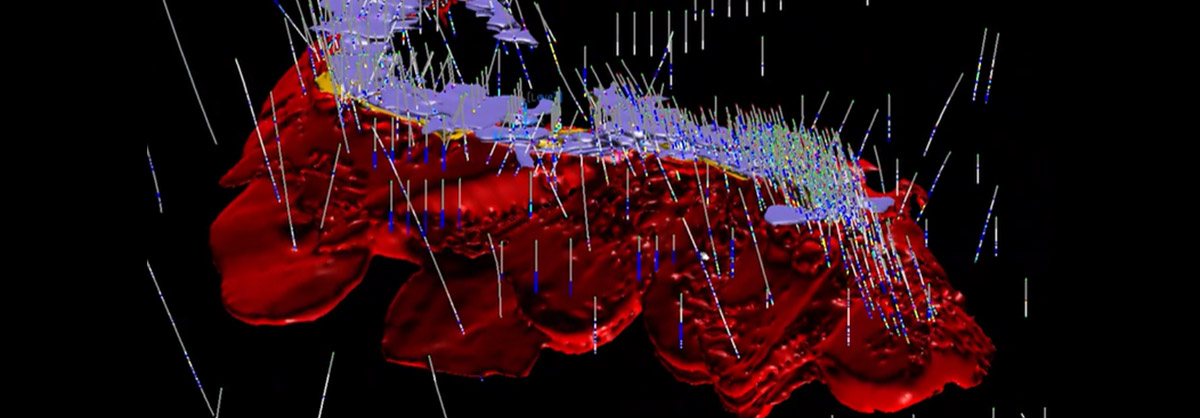June 2021 Issue Index
Evolution of a mine
Maptek Evolution Strategy and Origin were used to produce complex financial models for the Havilah Resources open cut copper-gold operation in northern South Australia.
Havilah Resources holds 16,000 sq km of exploration tenements in the north of South Australia. The company has an approved pre-feasibility study (PFS) for the entirety of its Kalkaroo project, and recently pivoted to a study for a smaller oxide-only pit.
Havilah Resources has run multiple different scenarios to optimise both pit and schedule. The expectation is to break ground in early 2022.
The deposit has a unique character, with a very large orebody at depth and along strike. Drilling has proved 3 km of strike and four different ore types, with saprolite gold at the top (figure 1). Havilah Resources decided on the oxide area for the starter pit. Drilling continued in 2020 and created holes at up to 25 m centres (figures 2 and 3).
For long-term strategic planning, Maptek Evolution Strategy was used to build scenarios around the oxide pit, starting at the western end and developing east.
The block model was the geological data repository for this multi-element deposit. The net smelter return (NSR) was calculated and added as a field in the block model along with mining and processing costs, as well as different recoveries and geotechnical criteria.
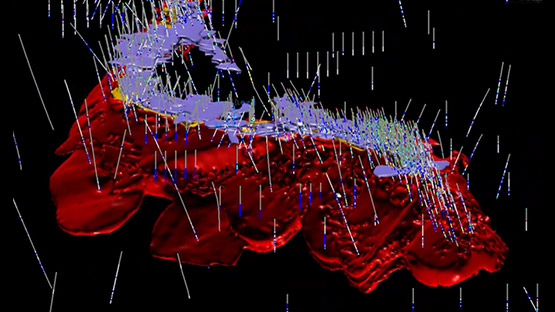
The four different ore types and throughputs for two plants had to be filtered appropriately to run a whole range of scenarios, particularly for the larger PFS (figure 3).
Geotechnical parameters were incorporated in the block model and the data was run in Maptek Vulcan Pit Optimiser on oxide-only and oxide–sulphide, defining the starting area where the orebody is closer to the surface.
Vulcan Automated Pit Designer with ramps was useful for generating stage plans and designs.
Having the pit stages already coded in the model made the process quick and easy and provided access to all the geotechnical information.
‘The mine planning work in Vulcan is mostly automated, and the block model was easily imported into Evolution, transferring all the stored data and all the stages along with it,’ said Havilah Resources Mining Engineer, Richard Buckley.
Finding the balances
Evolution Strategy scheduling parameters were initially set up for high level optimisation, enabling almost 40 different trade-off studies to determine the optimum extraction sequence. Havilah Resources evaluated the timing of operations and strategies around trading off optimal recoveries against a lower opex and capex within the process plant, as well as stockpiling strategies.
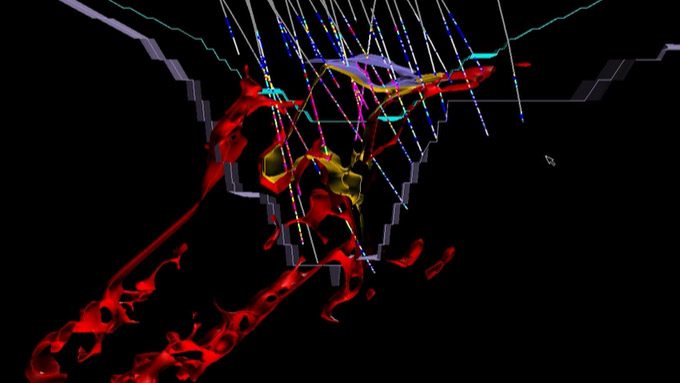
Evolution Strategy uses cut-off grade optimisation to determine the best cut off per period and using the NSR variable allows the schedule to be converted into an Evolution Origin setup at the click of a button. The level of detail then reduces to the block level, which is important when considering how to mine.
Evolution Origin gives greater control over material targets and allows haulage considerations to affect scheduling decisions. This accurate understanding of material movement is critical for contract negotiations. Once mining has reached stage six or seven in the oxide material, the sulphide operation will commence (figure 4).
Modelling in Evolution provides flexibility on how the process starts, and Evolution Origin also allows Havilah Resources to review the stage release criteria, to avoid mining too far ahead. With Evolution the data flows from the block model into the schedule and then ultimately into the financial model.
Variables carrying all the information are set up once in the block model and are carried through scheduling into the final report.
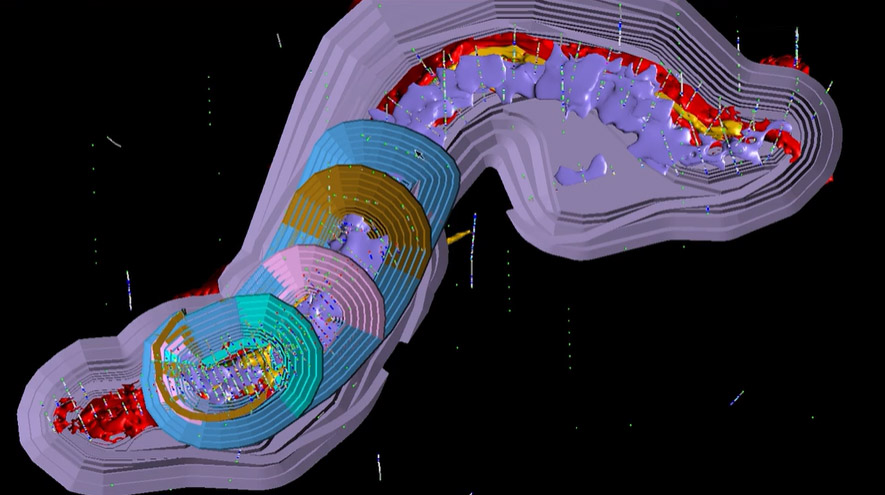
Evolution runs using cloud services, and can be run as many times as required. The results can be interrogated by period and by block to determine whether the schedule is adhering to the criteria provided in terms of the stages and the material left at a particular time.
The sulphide and oxide schedule is more complicated, with two plants and two ore targets. Evolution provides a realistic idea of how much material to move in the first years of the sulphide operation.
Evolution also enables ore blending, adjusting minimum and maximum targets to achieve the required mix to optimise process recovery. Stage release criteria is easily customised, and the different tonnes and grade for the various ore types output at the end of the schedule can be coded back in the block model.
Integrated workflow
The mine planning–scheduling process, previously handled with spreadsheets, is now all done in Evolution using the block model containing all of the relevant data. If the targets change, the optimisation delivers a new schedule which allows for in-depth reporting with pivot table and graphing functionality.
Spreadsheets are used at the financial modelling stage, tabling the schedule of tonnes processed per quarter and the blends of saprolite and native copper, chalcocite and chalcopyrite exported from Evolution Origin.
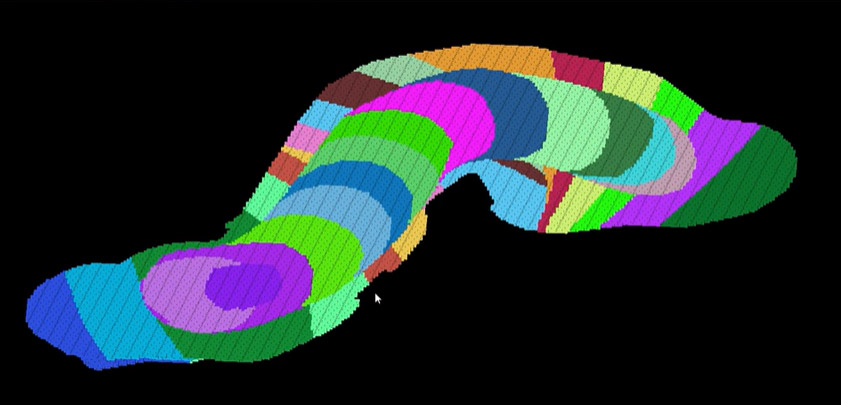
This information supports decisions such as when to start the sulphide plant, metal pricing inputs to be considered and payback periods.
The financial model summarises price and cost inputs, recovered volumes of metal and concentrate, and overall revenues. Ultimately, Havilah Resources is looking for the highest valuation that can be achieved within the resource base and scheduling constraints so capital can be raised to mine.
It is easy to drill down into the pre-development and sustaining capex, mining, and processing unit costs for communications with shareholders and management. NPV (net present value) and IRR (internal rate of return), along with life of mine revenues and all-in costs allow risk scenarios to be run to look at long term price forecasting.
Summary
Consistency of data is preserved through the Vulcan–Evolution process. The block model contains all of the valuable information – geology, estimated grades, mining studies and geotechnical data. Pit optimisation is run on the block model, and stage designs reference the block model, so the Havilah Resources mine planner is confident before entering Evolution that the right level of detail is available to actually start scheduling.
‘The ability to schedule from the block model is the one thing that a lot of other systems don’t have,’ stated Buckley.
Preprocessing of the data is not required outside the block model before proceeding to a scheduling system. It would not have been possible for Havilah Resources to do 40 or more trade-off studies for the original PFS without a block model backend.
Thanks to
Richard Buckley
Mining Engineer
Havilah Resources
- The Vulcan–Evolution process preserves the geological data encoded in the block model, ensuring a single source of truth for integrated mine planning and scheduling
- The block model backend enables Havilah Resources to run multiple trade-off studies to determine the optimum extraction sequence
- Greater control over material targets and allowing haulage considerations to affect scheduling decisions are benefits of the Evolution approach

